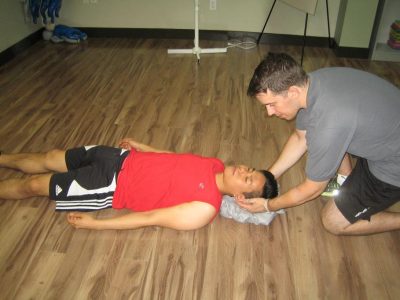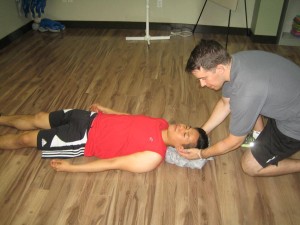A skull fracture involves any break in the cranial bone or skull. There are various types of skull fractures but there is only one main cause – direct strike or impact to the head that is strong enough to damage the bone. Any injury to the brain can also occur with the fracture, but it is not always the case.
A skull fracture occurs if force strong enough to damage the bone strikes the skull. Any form of impact to the head can result to a skull fracture, including being struck by an object, falls and damaging the head in a vehicular accident.
A fracture is not always easy to pinpoint, but the symptoms that might indicate a fracture include:
- Facial bruising
- Tenderness and swelling around the site of impact
- Bleeding from the ears or nostrils
A skull fracture occurs if force strong enough to damage the bone strikes the skull.
The treatment is based on the severity of the fracture. Pain medications are the only treatment needed for mild cases while neurosurgery might be required for serious injuries.
What are the types?
- Closed – a closed fracture or simple fracture is characterized by unbroken skin over the fracture
- Open – occurs if the skin is damaged and bone protrudes
- Basal – occurs in the floor of the skull specifically the area surrounding the ears, eyes, nose or back region near the spine
- Depressed – characterized by an indentation in the skull that can extend into the brain cavity
What are the indications?
In some instances, especially with the open or depressed type, it is easy to determine that the skull is broken. Oftentimes, the fracture is not evident.
The serious symptoms of a skull fracture include:
- Bleeding from the wound due to trauma usually close to the site of trauma or around the ears, eyes and nose
- Swelling
- Bruising around the site, beneath the eyes or behind the ears
- Significant pain at the site
- Warmth or redness at the site
Management
The treatment for a skull fracture is based on various factors. The doctor will consider the age, health and medical history as well as the type of fracture, severity and any resulting injuries to the brain.
In some instances, especially in the basal type, pain medications might be needed. This type of skull fracture might require surgery if it results to significant drainage of cerebrospinal fluid from the ears and nose.
Surgery is often an option for the depressed type. If the depression is significant, surgery is required to fix it. In case the depression places pressure on the brain or if there is drainage of cerebrospinal fluid, surgery is also required.
Disclaimer / More Information
The information posted on this page on a skull fracture is for learning and educational purposes only. To learn to recognize the indications and how a skull fracture is treated, register for first aid training at one of our training centers located throughout Canada. The training centers are in Edmonton, Red Deer, Calgary, Vancouver, Kelowna, Surrey, Winnipeg, Toronto, Ottawa and Halifax.


